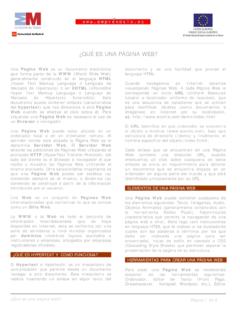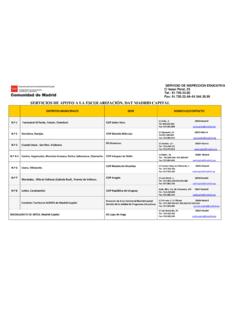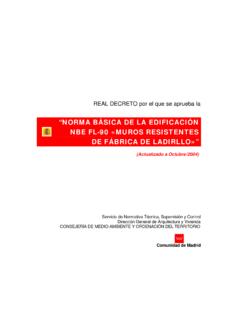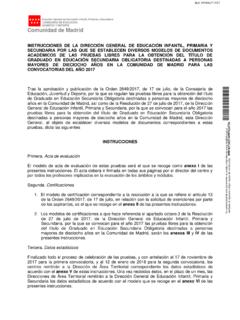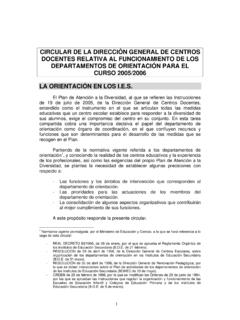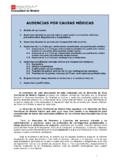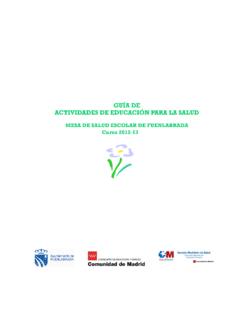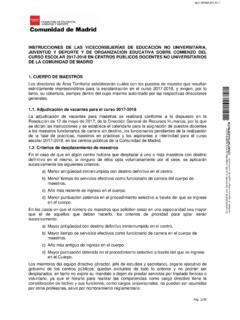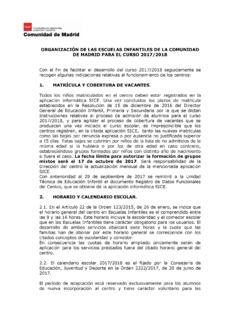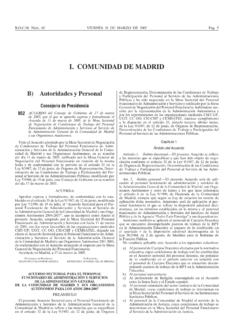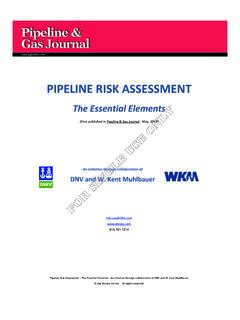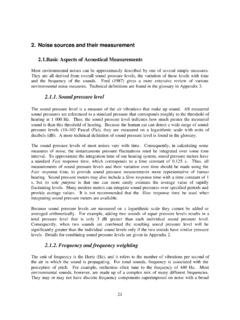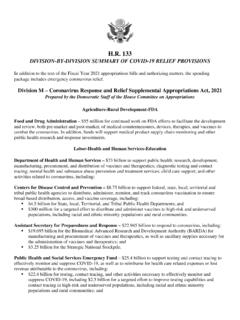Transcription of RISK ANALYSIS AND QUANTIFICATION
1 Risk ANALYSIS and Quantification1 What is Risk ANALYSIS ?1 What is Risk ANALYSIS ?2. Risk ANALYSIS Methods2. Risk ANALYSIS Methods3. The Monte Carlo Method 3. The Monte Carlo Method 4. Risk Model4. Risk Model5. What steps must be taken for the development of a Risk Model?5. What steps must be taken for the development of a Risk Model? is Risk ANALYSIS ? is Risk ANALYSIS ? After identifying and classifying the risks , we are going to proceed with their ANALYSIS , that is, the possibility and the consequences of each risk factor are examined in order to establish the level of riskof our project.
2 The risk ANALYSIS will determine which risk factors would potentially have a greater impact on our project and, therefore, must be managed by the entrepreneur with particular ANALYSIS ANALYSIS MethodsThere are three kinds of methods used for determining the level of risk of our business. The methods can be: Qualitative Methods Quantitative Methods Semi-quantitative Methods: This is the kind of risk ANALYSIS method most often used for decision making in business projects; entrepreneurs base themselves on their judgment, experience and intuition for decision making.
3 These methods can be used when the level of risk is low and does not warrant the time and resources necessary for making a full ANALYSIS . These methods are also used when the numerical data available are not adequate for a more quantitative ANALYSIS that would serve as the basis for a subsequent and more detailed ANALYSIS of the entrepreneur s global risk. The qualitative methods include: Brainstorming Questionnaire and structured interviews Evaluation for multidisciplinary groups Judgment of specialists and experts (Delphi Technique)Semi-Quantitative Methods: Word classifications are used, such as high, medium or low, or more detailed descriptions of likelihood and consequences.
4 These classifications are shown in relation to an appropriate scale for calculating the level of risk. We need to give careful attention to the scale used in order to avoid misunderstandings or misinterpretations of the results of the Methods: Quantitative methods are considered to be those that enable us to assign values of occurrence to the various risks identified, that is, to calculate the level of risk of the project. Los quantitative methods include: ANALYSIS of likelihood ANALYSIS of consequences Computer simulation The development of these measurements can be effected by means of different mechanisms, among which we note particularly the Monte Carlo Method, which is characterized by:- A broad vision in order to show a range of possible scenarios- Simplicity in putting it into practice - Suitable for performing computer Carlo Carlo Method This is a quantitative method for the development of a risk ANALYSIS .
5 The method was given this name in reference to the Principality of Monaco, which is famous as the capital of games of chance . This method seeks to represent reality through a mathematical risk model, in such a way that by assigning values randomly to the variables of the model, different scenarios and results are obtained. The Monte Carlo Method is based on making a sufficiently high number of iterations (assignments of values in a random fashion), so that the sample of results obtained is sufficiently broad so as to be considered to be representative of a real situation.
6 These iterations can be made by using a data processing engine. With the results obtained from the various iterations made, a statistical study is performed, from which relevant conclusions are extracted with respect to the risk of the project, such as mean, maximum and minimum values, standard deviations, variances and likelihood of occurrence of the different variables determined on which to measure the ModelWhat is a Risk Model? This a mechanism that enables us to put the Monte Carlo quantitative risk ANALYSIS method into practice.
7 It is the representation of the reality to be analyzed through a structure of mathematical calculations, in which the significant risk variables are calculated and are placed in relation to the rest of the variables that affect our project, and with the economic variables on which we are going to measure the project s level of risk, Profit and Net Present develop a Risk Model? For the measurement of the likelihood of occurrence of the risk and the impact that it would have on our business project; this impact is measured in the Profit obtained by the entrepreneur in the financial year and the Net Present Value of the business project.
8 Moreover, a risk model will enable us to carry out a control and monitoring of the project, by comparing the value at risk of the variables with the real value finally incurred in the period under steps must be taken for the development of a Risk Model? steps must be taken for the development of a Risk Model? The steps to be taken for the development of a Risk Model based on the measurement of the likelihood of occurrence are set out below: STAGE 1- Selection of the likelihood functions Once the risk variables that affect the entrepreneur s Business Plan have been identified, we need to learn the behavior of such variables, that is, what their range of variation is going to be for each of the projection periods.
9 For this purpose, we need to identify the likelihood function that is associated with each of the variables affected by the risk, that is, the function that explains and reflects the behavior of the risk variable defined by the entrepreneur. Among the principal, most common and easiest for the user to apply, we note particularly the following likelihood distribution functions, assignable to the variables of a business project : Once the distribution functions have been analyzed, we identify those we consider to be most in line with the risk variables selected by the entrepreneur, because these will be the ones that best describe and reflect the behavior of the variable.
10 We must note that the selection of the likelihood functions within the Risk ANALYSIS Module comes predefined by the tool, so that the entrepreneur will find an association already made; each risk variable has been assigned a likelihood distribution. The entrepreneur must assign values to the variables of such functions in order to be able to carry out the some cases, the entrepreneur will be asked to determine what the range of variation is; then he or she must indicate the minimum, maximum and, when so requested, the most likely Minimum: The lowest value that the variable being analyzed can Maximum: The highest value that the variable being analyzed can Most likely: Value which the user feels can be reached by the variable being analyzed, in normal another kind of variable, the estimated value and the likelihood of occurrence associated with it will be Value 1: A possible value which the user assigns to the variable being analyzed - Likelihood 1.
